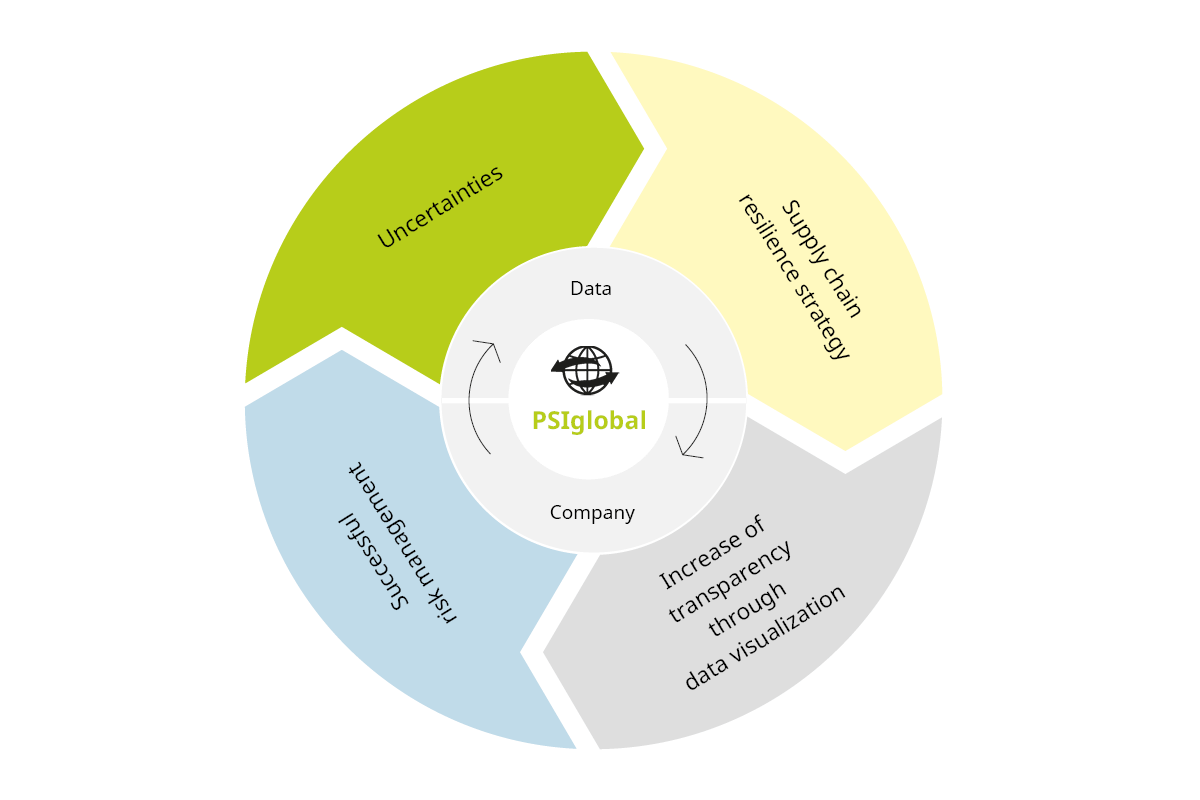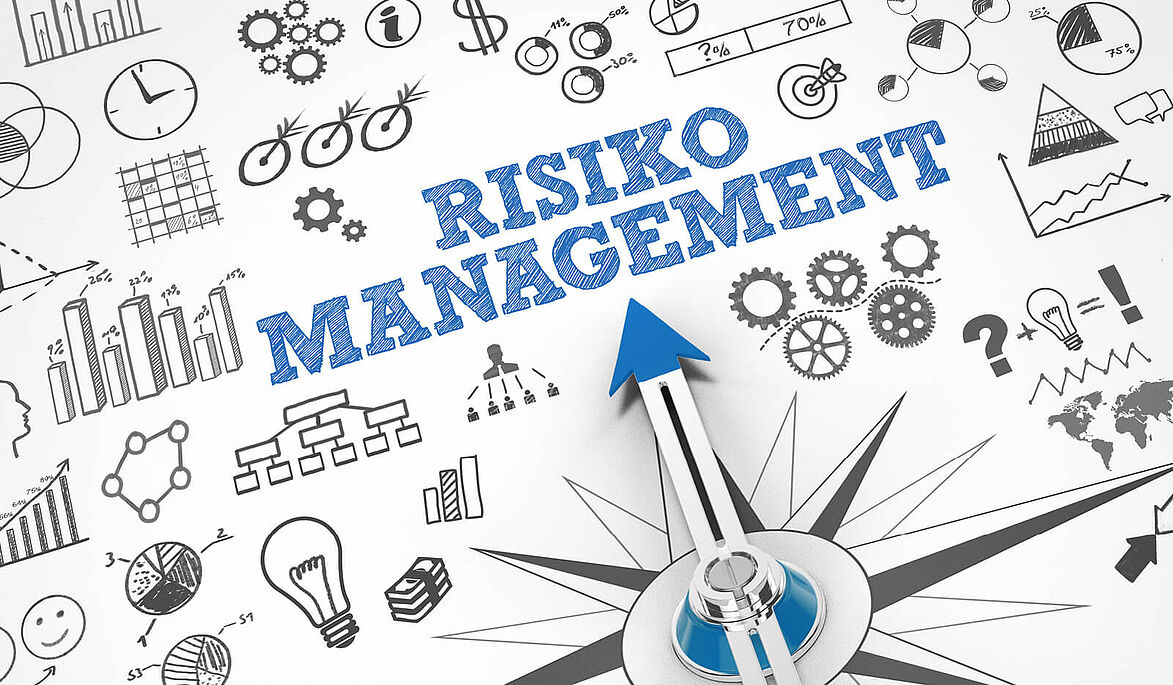A well-functioning value chain is a major challenge for many companies. In the logistics industry, for example, the following question arises: What happens when unforeseen events paralyze supply chains? When efficiency and cost optimization become secondary and basic supply must be ensured? Companies can enhance the robustness of their value chains and protect them against crises through strategic planning.
How do you plan when actually nothing can be planned?
In times of crisis such as the current corona pandemic, decision-makers must continue to keep an eye on the future of their company. But can such unforeseeable events be planned or even predicted? With a suitable strategy and the development of several options, it is not yet possible to look into the future. However, companies can better prepare themselves for this. This will require readjusting traditional priorities and reducing the efficiency requirements that have applied so far to expand various options.
In uncertain times, it is not cost optimization that pays off in a company but adaptability. This means using new ideas to change existing business models so that they can be continued profitably. The challenge currently facing many decision-makers is to weigh up these criteria against each other and create flexibility at an early stage.
According to an article from the German business news magazine “WirtschaftsWoche” supply chain researcher and professor of business administration at the University of Cologne Fabian Sting distinguishes between known and unknown uncertainties:
- Known examples are quality problems of new suppliers or shortage of supply due to political tensions.
- Unknown, on the other hand, are those uncertainties that are hardly or not at all predictable. These include events such as pandemics, explosions, economic and financial crises, natural disasters, trade conflicts or political events. All of them can trigger serious changes in the supply chain and influence people's daily lives. Effects on companies are often visible in almost all industries and regions worldwide.
Optimum efficiency does not withstand the crisis
Procurement, production and distribution processes in companies have so far been designed and controlled primarily in terms of purchasing savings, efficiency and cost savings. In many cases, this also leads to overly lean supply chains.
Procurement processes are designed for efficiency and just-in-time deliveries, without interim storage and buffers where trucks, aircraft and sea-going vessels act as so-called “warehouses-on-move”.
Stability and robustness become indispensable as criteria in strategic planning
It currently becomes apparent that only supply chains that have been designed to optimize costs are particularly susceptible to crises. Rigid processes and lack of transparency lead to insufficient agility. They deprive decision-makers along the supply chain of the opportunity to flexibly react to dynamic scenarios. The strong focus on cost savings and sales targets as well as historically grown supply chain structures result in a lack of transparency.
This requires strategic planning of the supply chains, a so-called “supply chain resilience strategy” which also includes joint supply chain event management.
What is a value network?
“A value network is created by opening and making value chains more flexible. The value chain includes all stages of product manufacture. They are presented as an ordered sequence of activities which are interconnected in processes. In a networked value chain, data from the various stages is collected and shared with other internal and external participants”. (Source: Federal Ministry of Economics and Energy)
Optimization of the value networks for crisis
Due to this dependency, companies can only react slowly and, above all, only jointly to disruptions and changes in the value networks. In the future, purchasing, logistics and finance departments will have to join forces to make common decisions and a clear commitment to long-term strategic supply chain risk management. This includes the establishment of robust supply chains as well as forward-looking supply chain planning and optimization.
Challenges for the supply chain due to unforeseeable events
- Identification and prioritization of affected deliveries, orders and critical products
- Checking and building of redundant sources of supply (suppliers) and warehouse stocks
- Development of potential temporary storage capacities in networks or analysis of further/alternative location candidates
- Increase in transparency through data visualization to avoid delivery bottlenecks
- Assessment of the impact of transport restrictions (lack of capacity, closed national borders, longer transit times) or increased freight rates on the logistics network and analysis of alternative shipping options
- Rail freight traffic vs. truck traffic: Shortage of truck drivers in Europe, problems for trucks at the borders as well as the high security of rail transports promote the demand for capacities in combined transport
Successful risk management in the supply chain
The basic prerequisite for successful and holistic risk management in supply chains is continuous management of the value chains. The variety of uncertainties makes it impossible to design one specific alternative plan for production, transport and supply chains. However, intelligent software systems offer options for intelligent risk management. Both in advance and in the specific situation, practical models for the supply chain can be generated, analyzed and applied at short notice.
For this purpose, the large and heterogeneous databases of the participating companies should be collected in an SCM system and integrated into a supply chain model. In such a system, the large amounts of data (big data) can then be visualized via maps, graphics or dashboards/control towers. The transparency obtained supports those responsible in making better decisions along the supply chain.

Tool for integrated planning
The strategic tool PSIglobal enables the integration of data from different source systems and their combination to create digital models of complex supply chains.
Planning decisions and optimization approaches can be exercised within the framework of “what-if scenarios” and the resulting effects can be directly evaluated. This way, PSIglobal supports a comprehensive, proactive risk management in value networks. Continuous planning also increases the supply chain's responsiveness in times of crisis, thus making a direct contribution to its flexibility.


